You can trust Cyclingnews
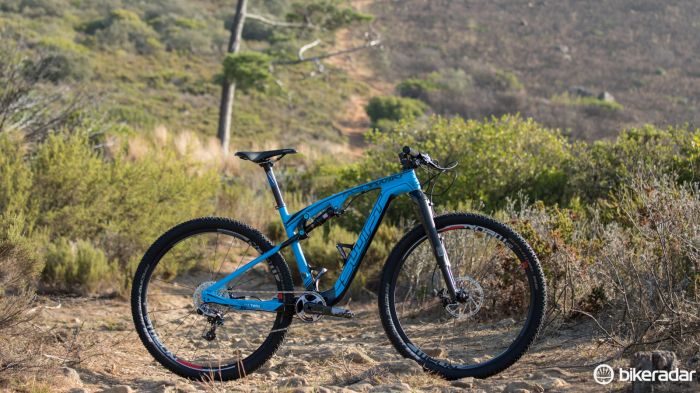
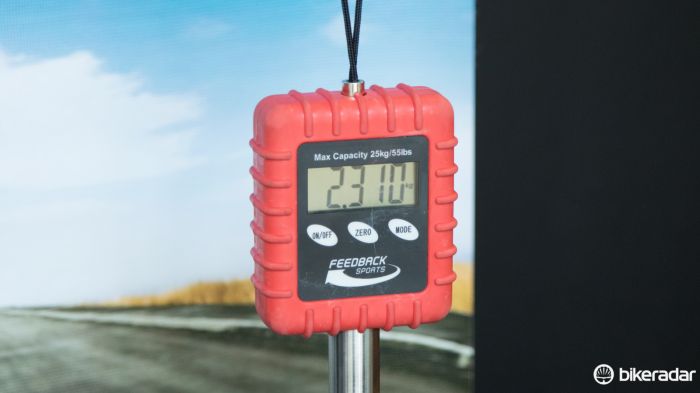
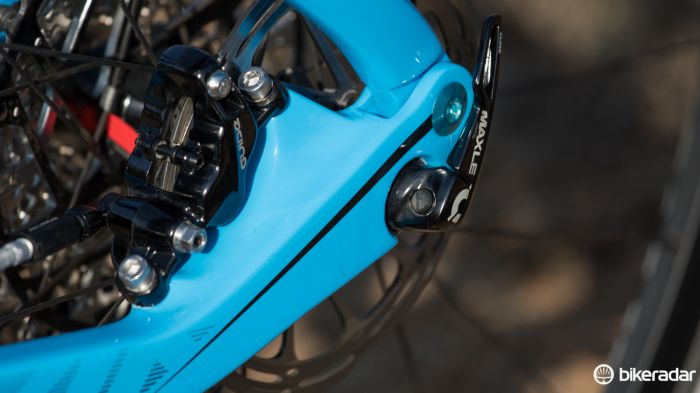
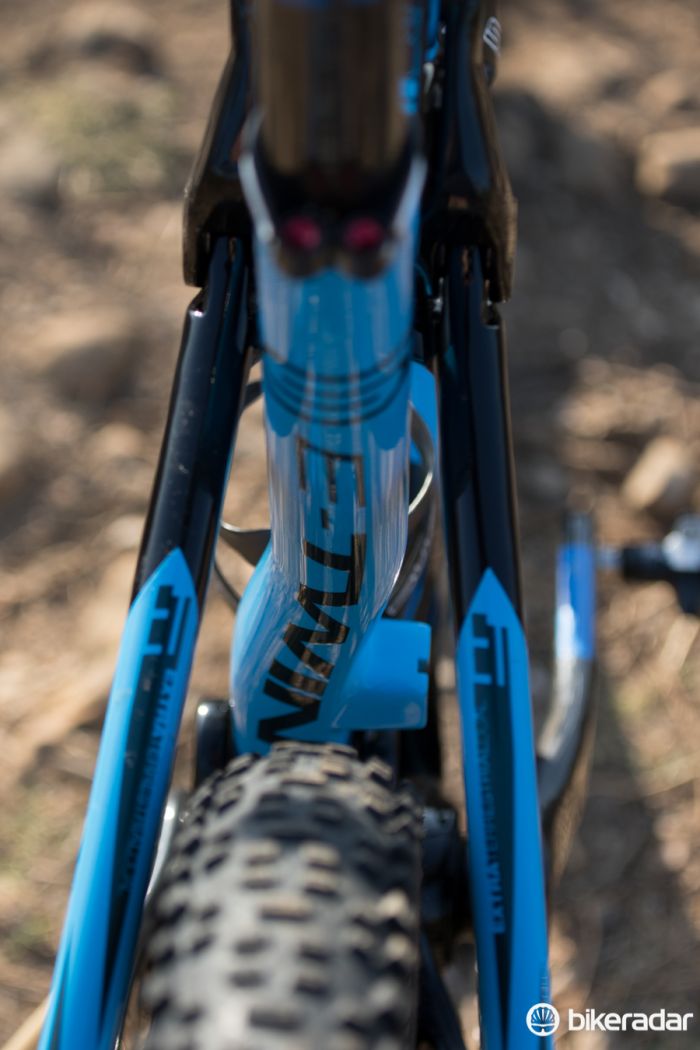
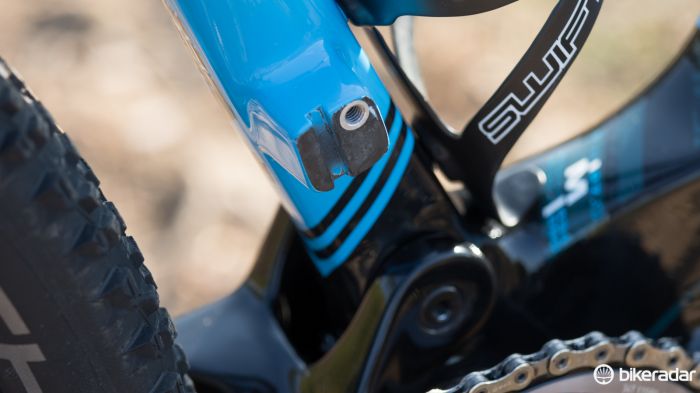
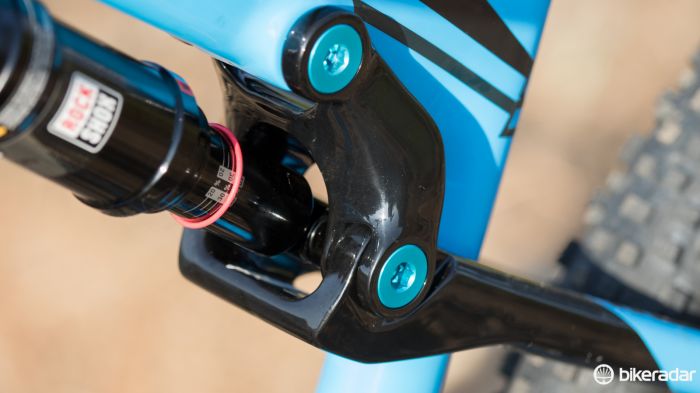
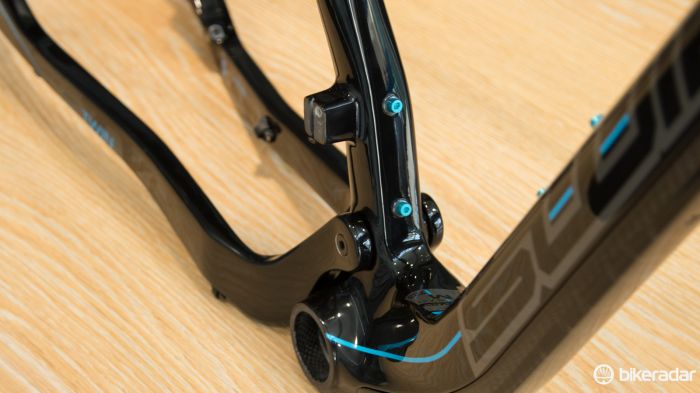
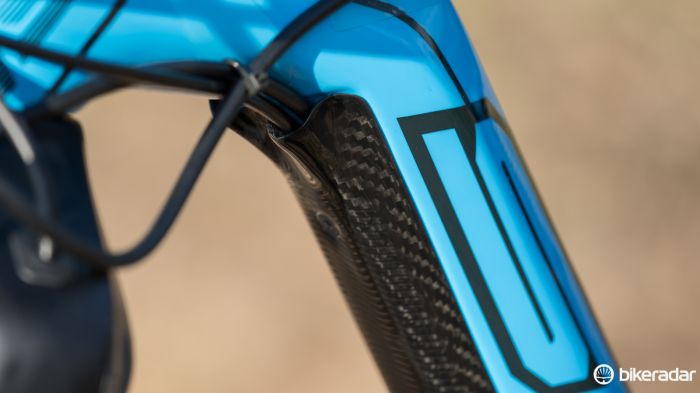
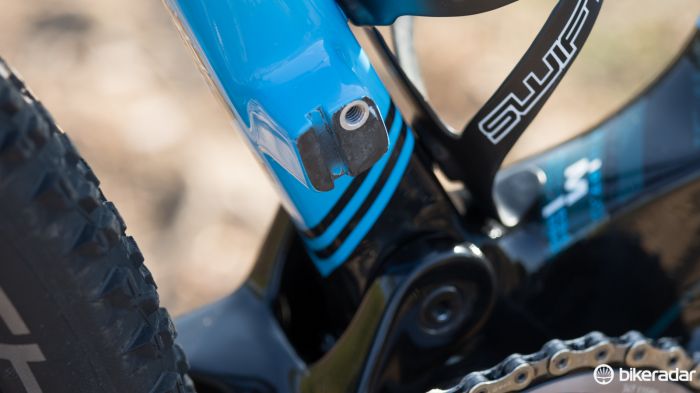
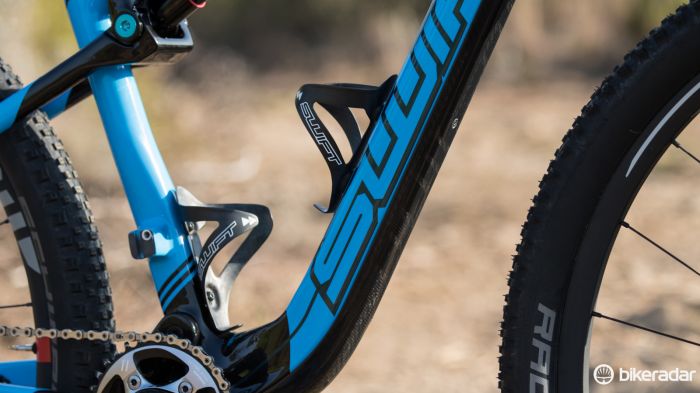
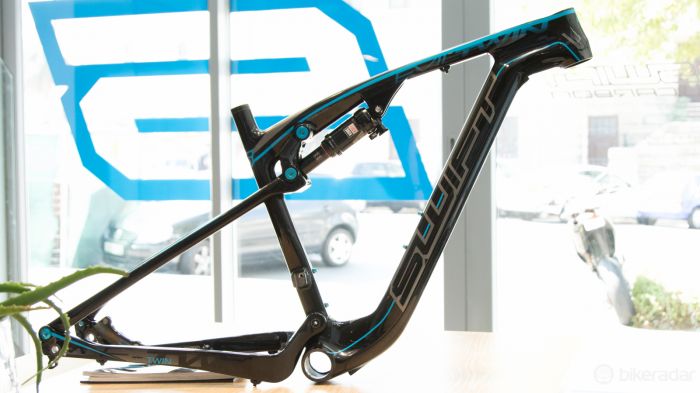
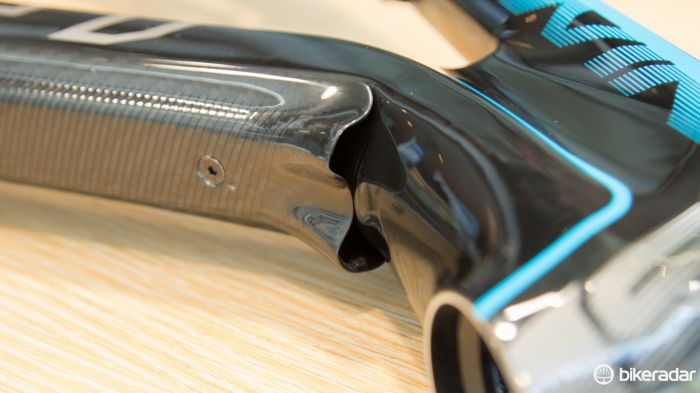
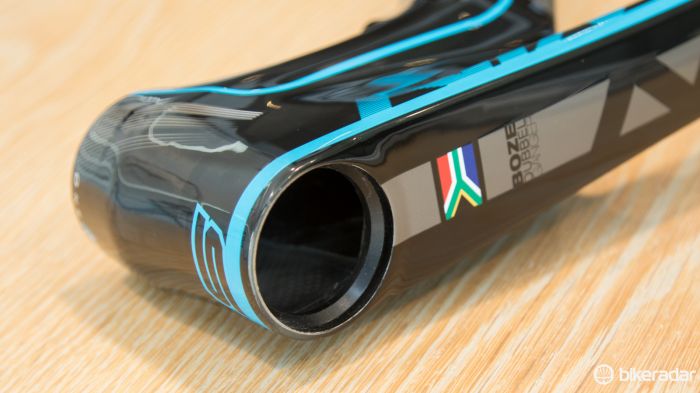
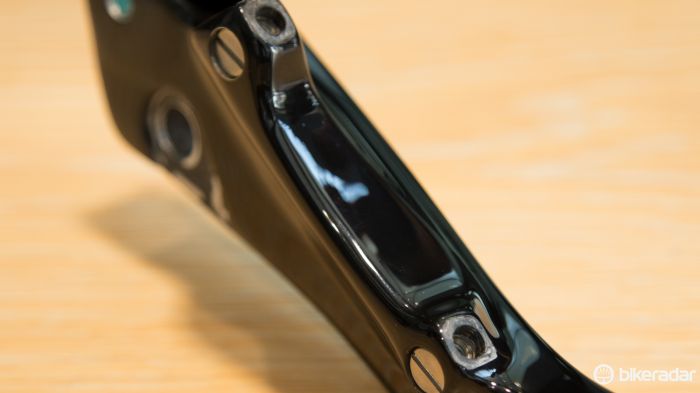
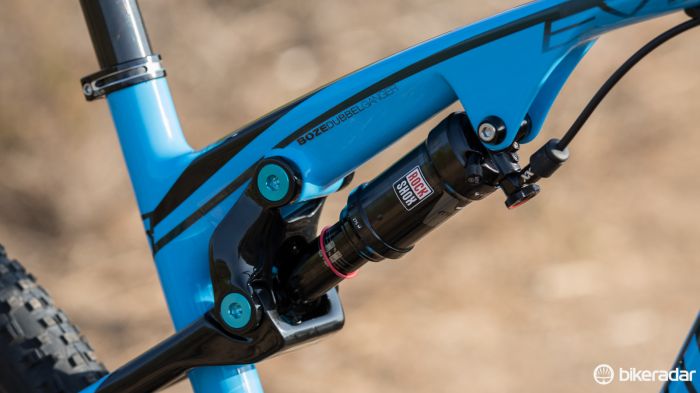
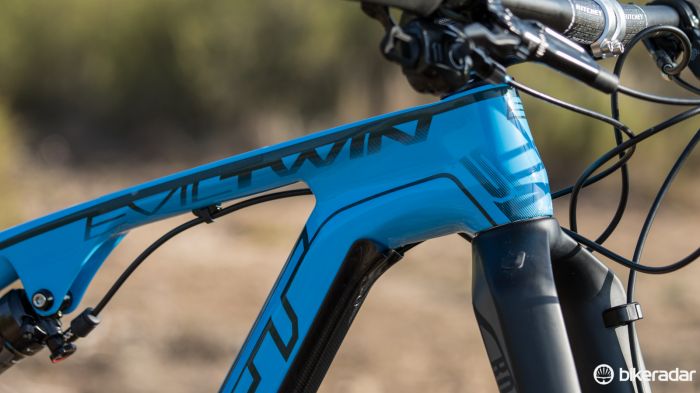
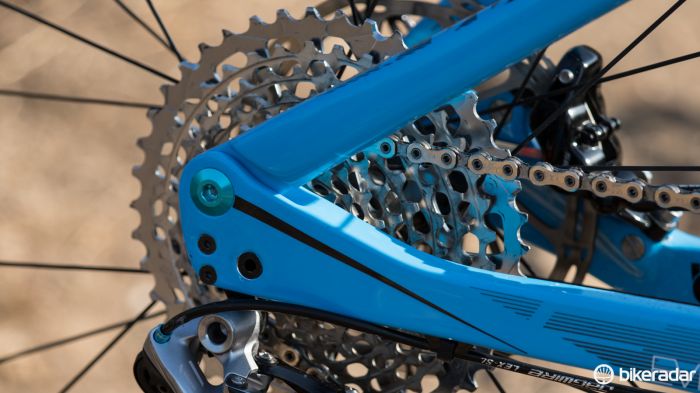
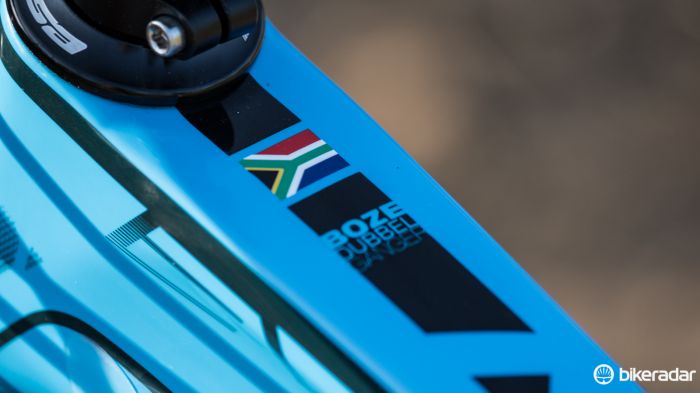
This article originally appeared on BikeRadar
The SwiftCarbon Evil Twin was first announced in late 2014, and is the brand's first dual suspension mountain bike. It's focused on cross-country and marathon races.
BikeRadar recently got to test-ride the Evil Twin while covering the 2015 Absa Cape Epic, the very event the bike was designed for. The eight-day stage race features raw terrain, steep climbs littered with wheel-slipping gravel, fast and loose corners, and long hauls of power riding, which just so happen to be the conditions the Evil Twin thrives in.
With space for two water bottles within the mainframe, short travel, 29in wheels (apart from the extra small size, which has 27.5in) and an ultra-aggressive ride, the Evil Twin is staring down Specialized's hugely popular S-Works Epic Marathon, a bike that currently makes up roughly 30 percent of the Cape Epic’s field.
Ride and handling: Fast. And that's exactly the point
The Evil Twin's similar geometry is based on that of the much-loved Detritovore hardtail, so it's no surprise that it has a fast, aggressive manner, yet still keeps exceptional poise at speed.
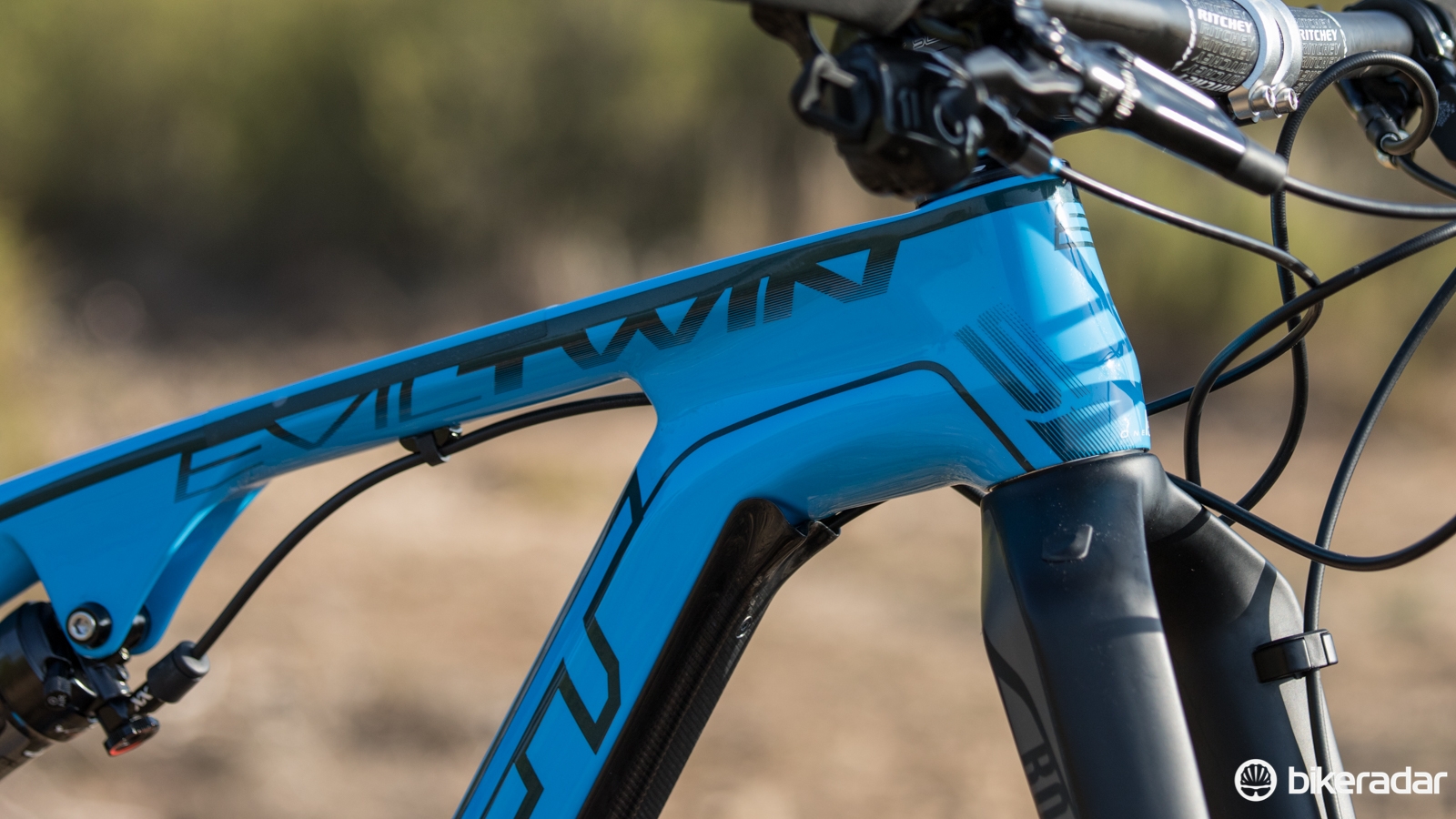
'Low and pro': it's possible to set the Evil Twin up to be very aggressive
Thanks to the combination of quick handling, the insanely stiff frame and efficient suspension, it only takes small amounts of rider input to get the Evil Twin to react. While this is a benefit for experienced riders, newer riders should be aware that the Evil Twin, like many other top-level race bikes, can be a little wicked, and bit of a handful in steep and technical terrain.
It's designed to be close to a hardtail, with additional comfort and control from the rear suspension, and is definitely tuned on the firmer side.
Unlike the Brain technology on the Specialized's Epic, which remains locked-out until a force from beneath opens it, the Evil Twin's suspension is more traditional, and remains open until you manually close it off.
While the Specialized Epic has its positives and loyal followers, the ability to preload the suspension for jumping and pumping is not a strong suit of the smart suspension. Riders who want finer control over their inputs will appreciate the simpler system employed by Swift.
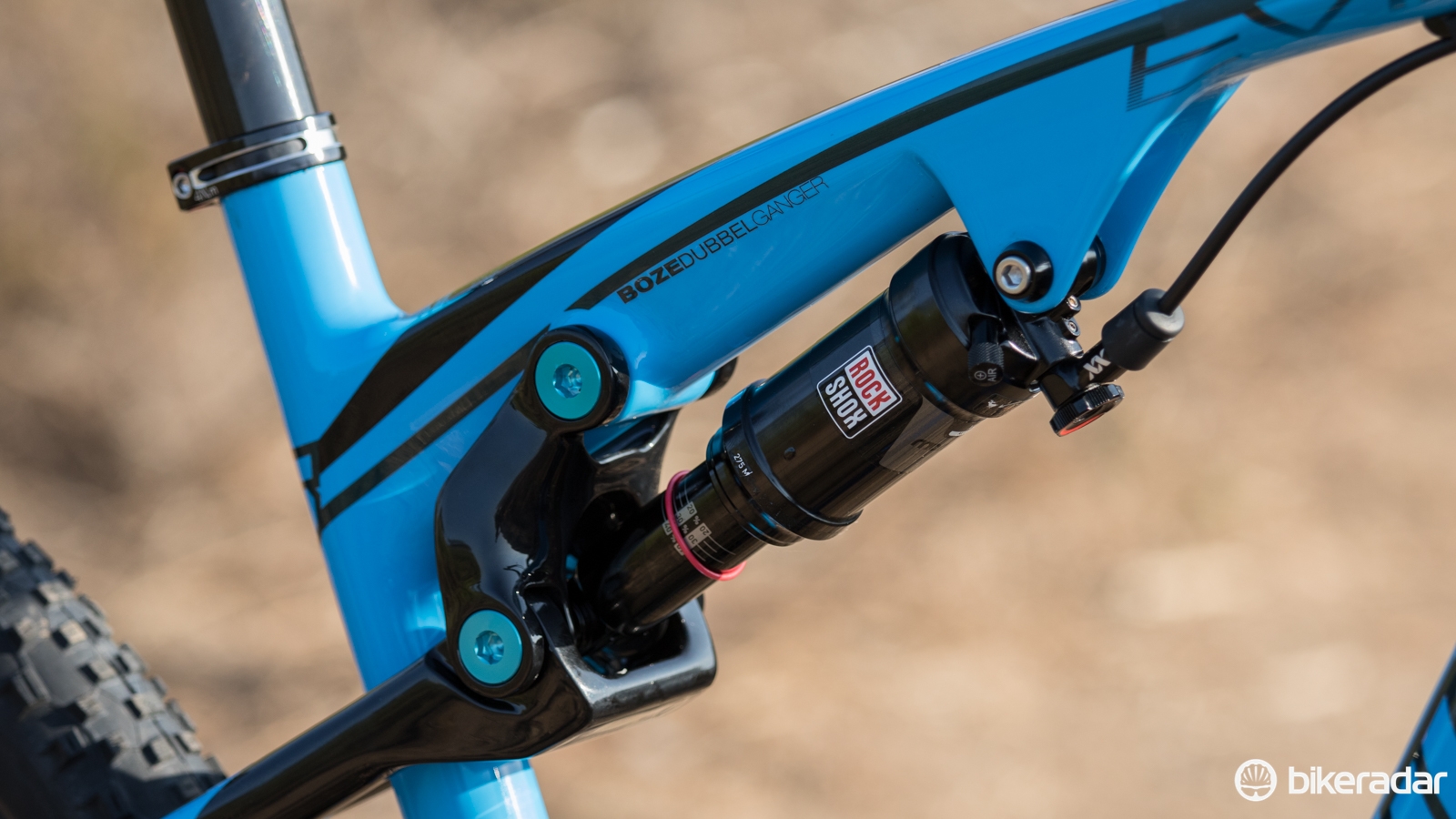
90mm of rear travel isn't considered a lot, but it's plenty for this style of bike
Over rough terrain the 90mm rear travel does an admirable job of keeping traction and soaking up the majority of hits. The largest hits are met with a quick, yet well-controlled progression, meaning you're unlikely to reach full travel unless you get really extreme.
This suspension ramp-up shows an obvious negative on ultra fast, rutted and braking bump filled descents, where it sits into a firmer mid-stroke and lacks plushness. This comes down to the shock tune, and riders seeking a plusher ride in exchange for pedalling efficiency will be able to remedy this with a shock change.
Despite the Evil Twin's respectable small-bump compliance, it is not one to bog down under power, allowing you to keep it open and focus on the trail in front.
This pedalling ability does mean some minor feedback makes its way through the 31.6mm seatpost when you are going hard on the pedals over flat, rocky terrain.
Our sample build featured a RockShox RS-1 100mm travel fork and RockShox XX rear shock. Both offer hydraulic lockouts off a single handlebar-mounted XLoc lever. Pushing this 'on-off' button transforms the bike from an already-efficient pedaler to a near-fully rigid bike for attacking on Tarmac.
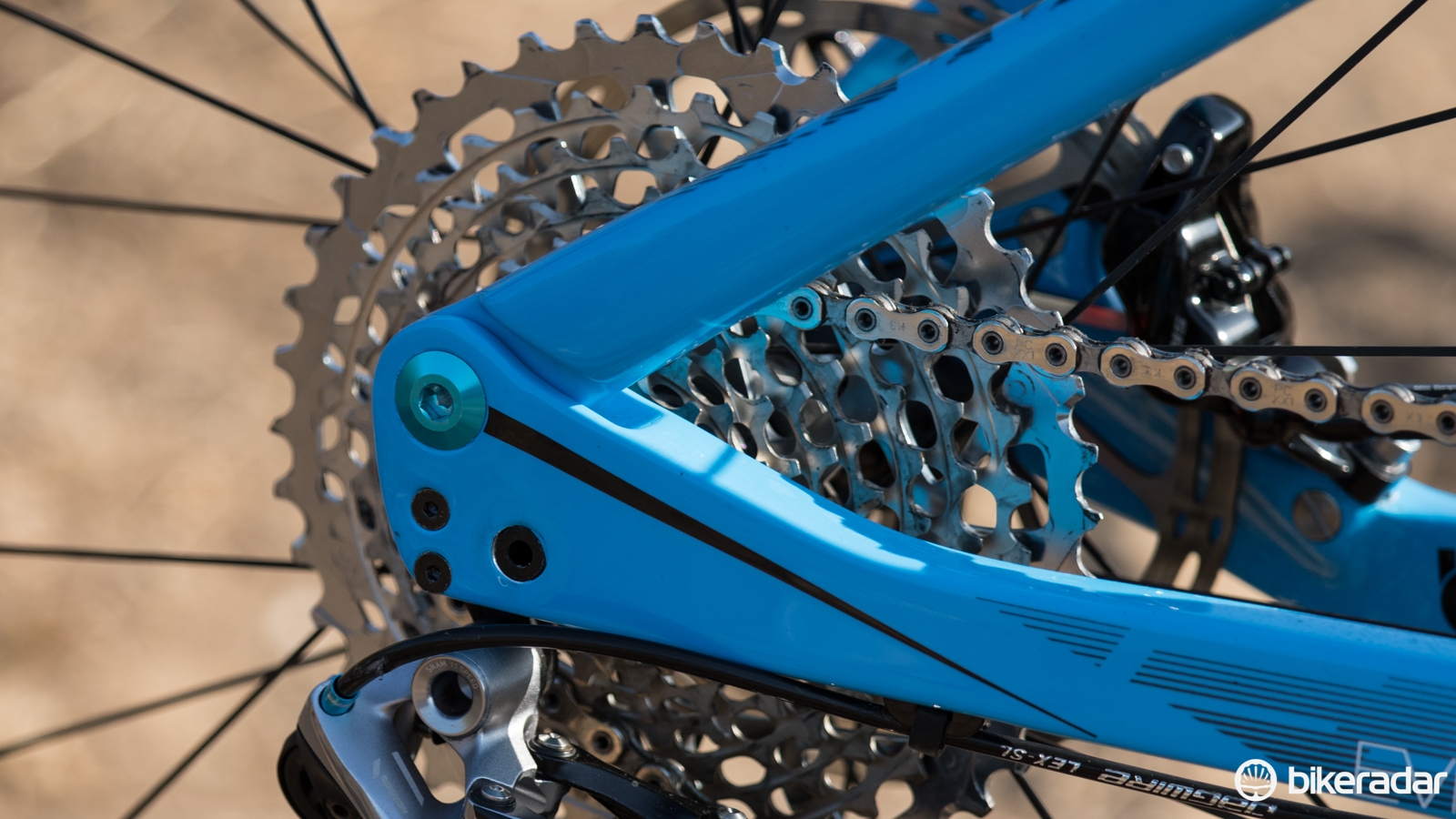
There's just no wiggle in this frame
Out back a combination of large tubes, double row 6801 sealed bearings and a 142 x 12mm thru-axle mean the perfectly stiff. Neil Gardiner, SwiftCarbon's marketing manager, told us that 100g of carbon was added to this area with the design goal of creating the stiffest race frame going.
Having pushed the bike into corners, along with forcefully flexing the rear wheel, we can attest that this is arguably the stiffest cross-country race frame going – front and rear. On the trail, this means absolute accuracy, efficiency and confidence when cornering hard, bombing a descent or flat-out sprinting.
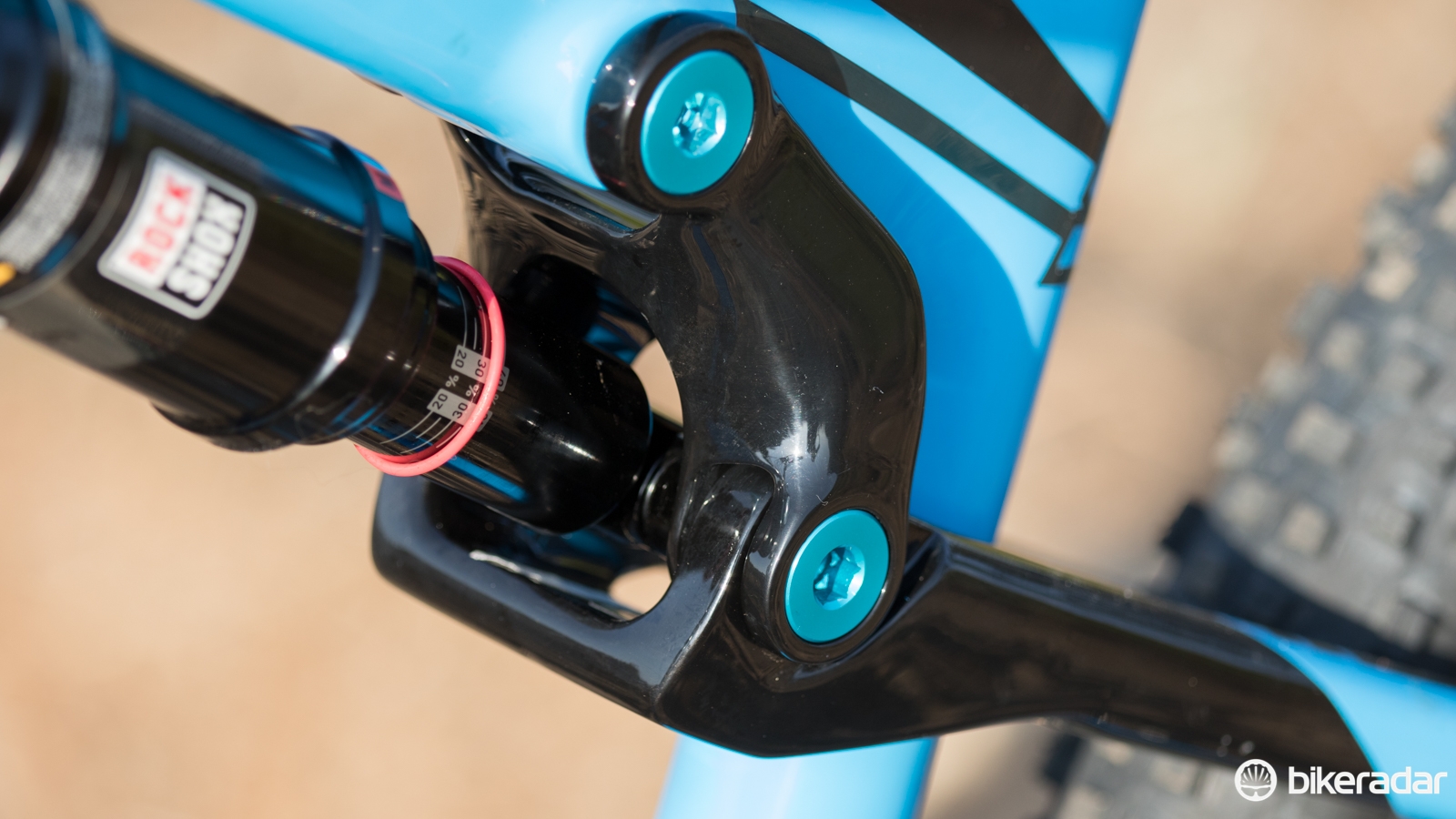
The rocker link is placed quite high on the frame, and our tester did knock his knees on it occasionally, but he does have an extremely narrow pedalling stance
The shock is placed straight underneath the raised top tube, so the stiff carbon rocker sits wider than the rest of the frame. Our extremely narrow-stanced rider did occasionally knock his knees on it, but its perfectly smooth finish and countersunk bolts meant it never caused discomfort.
The sizing of the Evil Twin runs fairly long and low, and with just four sizes on offer, this is a good thing. The size range ends with a large, so the very tallest riders will be left without a ride, but smaller riders should comfortably find a fit, especially with the 27.5in wheeled extra-small option. The short head tube means those seeking a low and aggressive position to counter the large 29er wheels will be pleased.
The longer top tube may mean that some riders will need a shorter stem. This would help to quicken the handling and allow for better descending control, without denting the Evil Twin's climbing prowess.
Frame: Stiff beyond belief and built for easy service
Given the SwiftCarbon brand name, the material that the Evil Twin is made from doesn't come as a surprise. Although the bike is engineered by European and South African experts, it's actually made in China. Swift states that the world's best composite manufacturing can be found there.
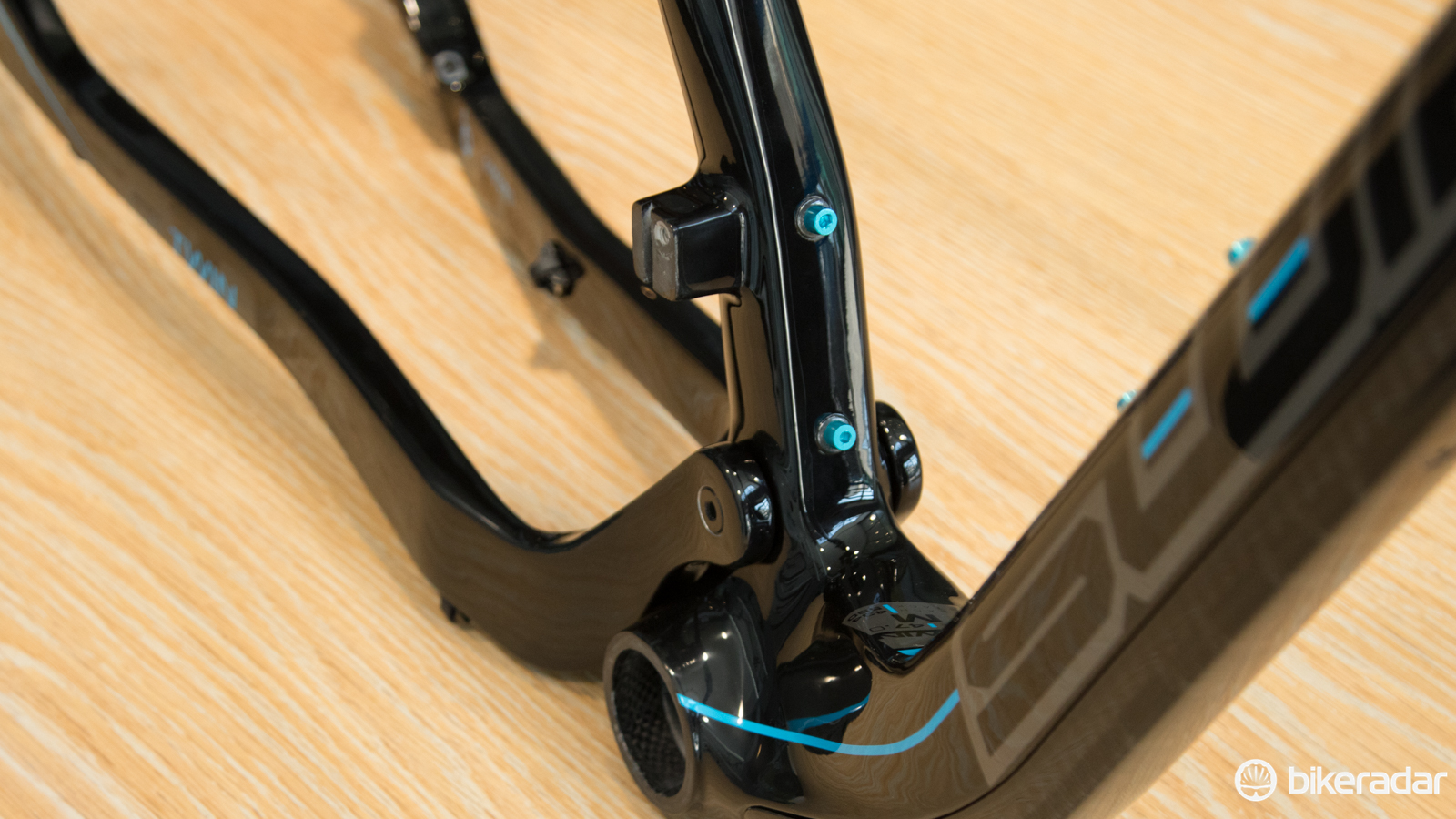
The latest manufacturing techniques have been employed to ensure wrinkle-free compaction of the carbon. The frame's back end has an asymmetric layout, with the bottom bracket, seat tube and chainstays all swooping in various directions to allow for front derailleur clearance and enhanced stiffness.
Designed with a helping hand from single-pivot expert and fellow South African Patrick Morewood (Mr Pyga bicycles), the Evil Twin employs a single pivot layout with a lowly-placed seatstay pivot.
While the PF30 bottom bracket shell is carbon, the 1 1/8 to 1 1/2in tapered head tube uses alloy inserts, which are more durable than carbon.
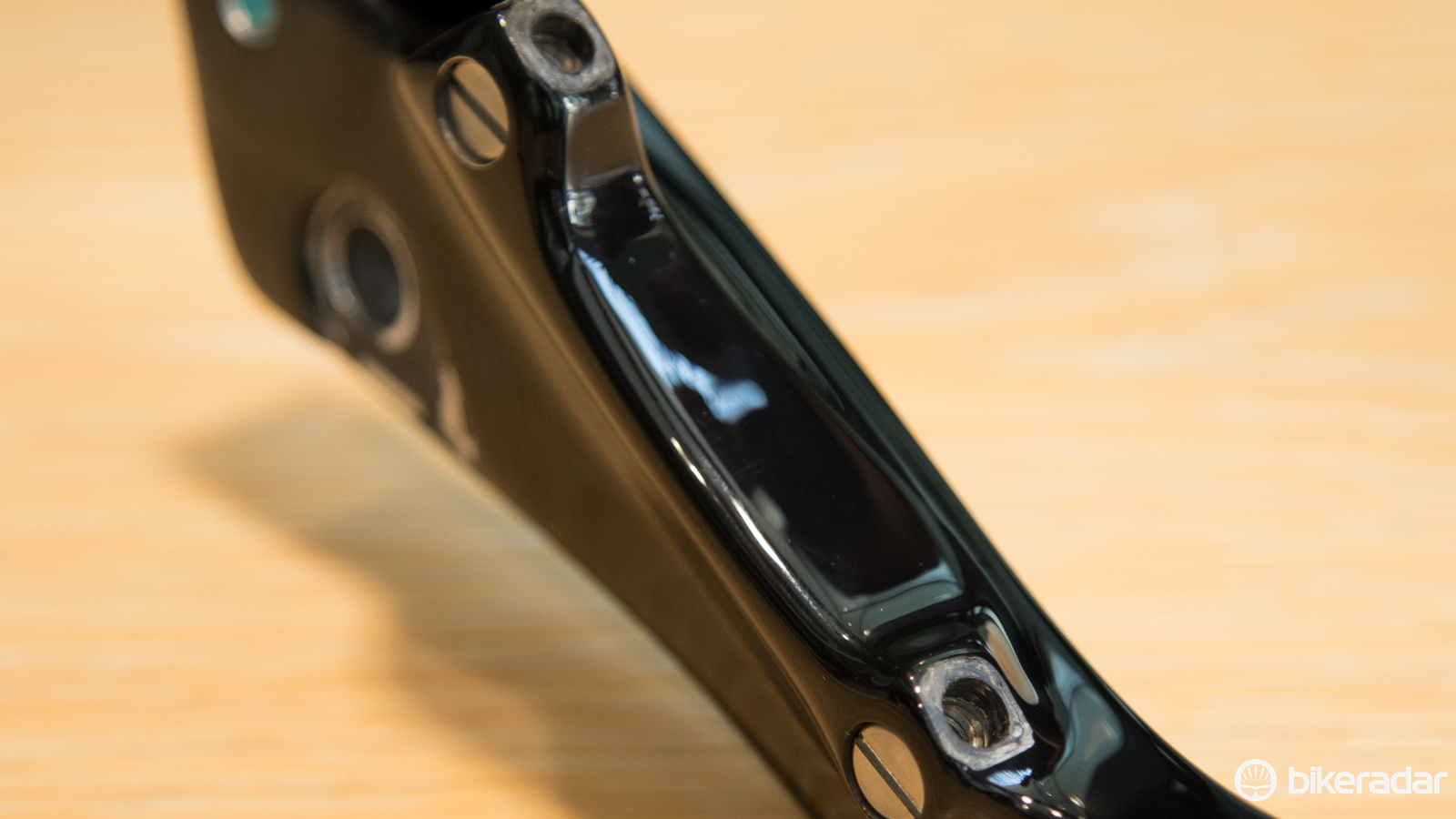
No stress if you strip the brake mount threads
One feature that's quite forward-thinking is stealth dropper seatpost compatibility, given how regularly such posts are used for technical courses.
Swift supplies the frame with both alloy and titanium pivot hardware depending on just how light you want to go, and the replaceable thread inserts in the 160mm rear post-mount brake bracket are a bonus too.
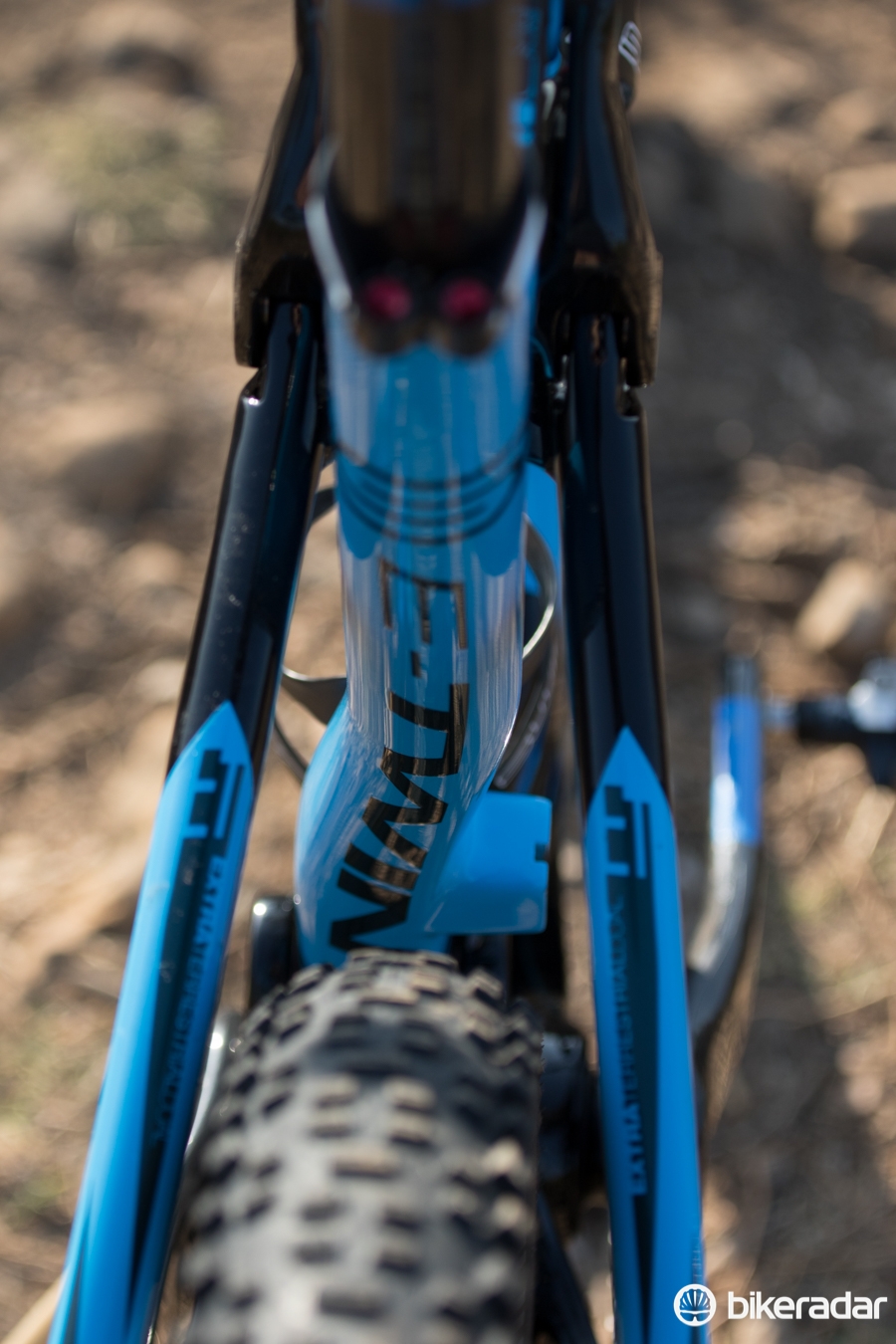
Nowhere for mud to clog
With no bridges on the chainstay or seatstays, tyre clearance is kept wide open and long days in rain-drenched soil aren't likely to end with a mud-clogged rear end.
The bike comes with a direct-mount front derailleur mount, and although our sample was left bare, Gardiner told us that a cover – which doubles as a CO2 canister holder – is on the way.
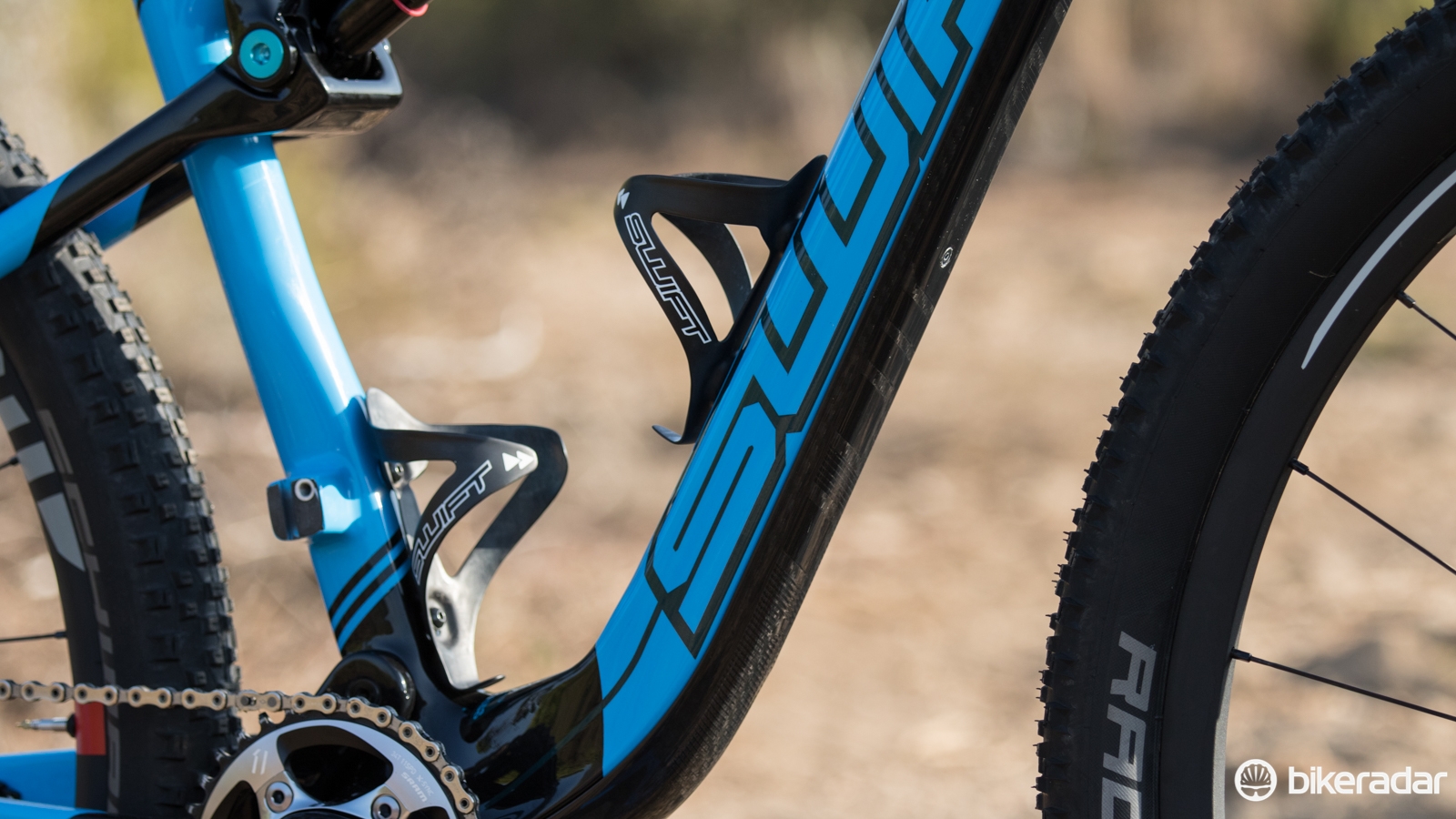
A big part of the Evil Twin is its ability to carry two bottles
The ability to carry two water bottles within the mainframe of a dual suspension is a major deal. Our medium sample had no problem carrying two 750mm bottles, and side-access cages were optional, not a requirement. We're told even the extra-small frame will fit two bottles, although at that size a side-cage and smaller bottle is a must for the seat tube.
Following requests from Cape Epic mechanics, a key factor in the Evil Twin's design was easy servicing and durability for multi-day races. The full-length cable housing is an example of this, and rather than routing them internally as is fashionable, Swift has created a carbon down tube protector that doubles as a stealthy cable guide.
This carbon sheet should keep the frame and cables safe from rock strikes. In the event a cable does need to be replaced, the bolts that hold this cover in place are extra long to allow room to fix it without needing to remove it completely.
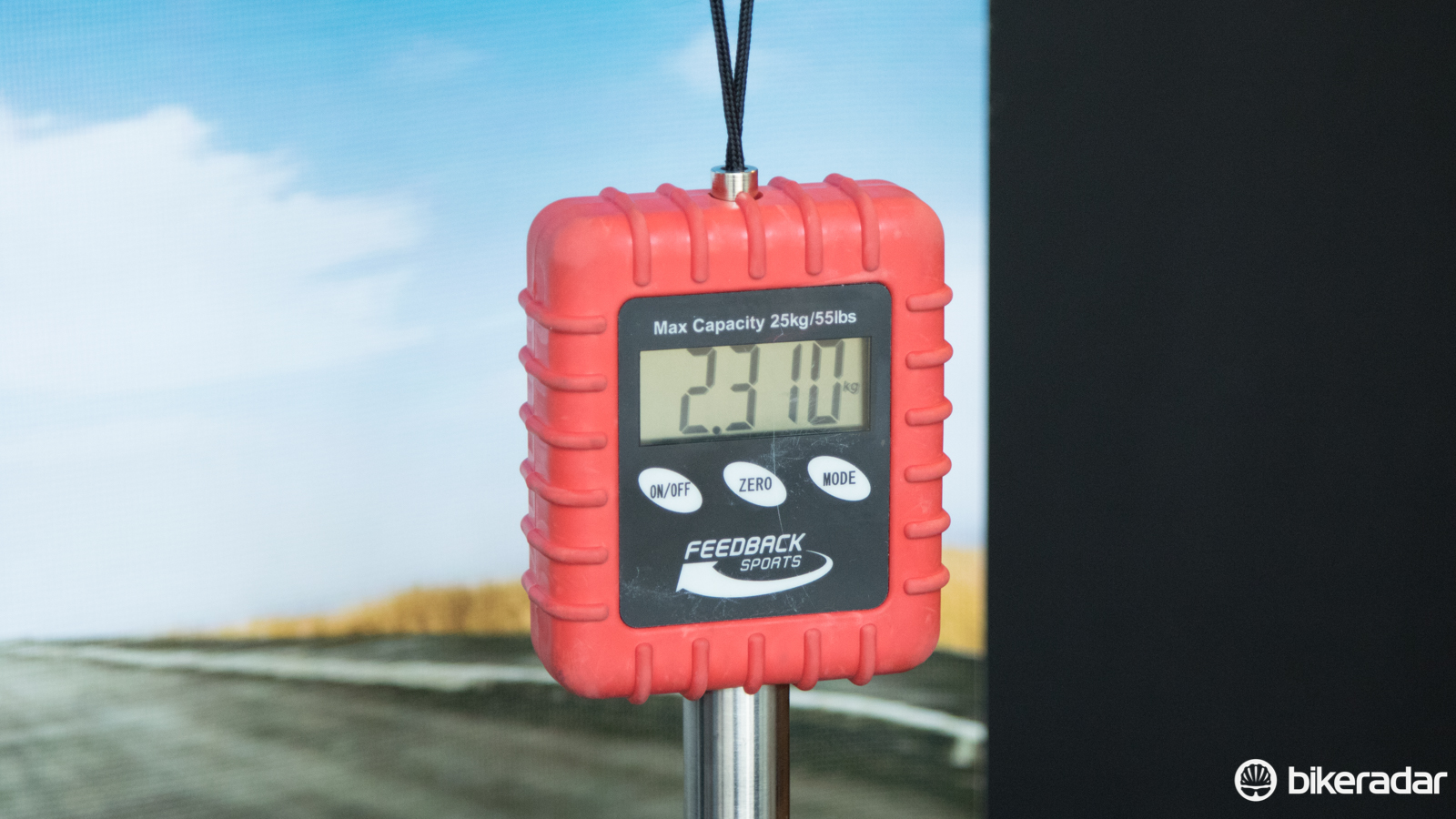
We weighed our medium frame before building it up. It was 2.31kg including the RockShox XX rear shock
Our medium sample frame, including bidon cage bolts, derailleur hanger and RockShox XX rear shock (but no seat clamp or shock remote) tipped the scales at 2,310g.
That's slightly above Swift’s initial claims, but still competitive when you consider the double-row sealed bearings and huge carbon down tube protector that could be swapped out for simpler cable guides.
Equipment: A sample build worthy of a top step, but one you should make your own
While many potential Evil Twin buyers are likely to start with a frame, others may be seeking a complete bike.
Our test sample was built with an upside-down RockShox RS-1 fork, SRAM XX1 gearing, SRAM Roam 50 wheels and SRAM Guide brakes.
It’s a solid and reliable build (a must for multi-day marathon racing), but a frame of this quality begs for a lighter, race-focused wheelset.
Not everyone will want the hydraulic lockouts offered by the top-end RockShox equipment, so SwiftCarbon also offers a Fox CTD Factory rear shock option.
Having seen Specialized Epics litter the trails of the Epic, it's clear there's a very loyal market out there for this type of bike. Sure, it’s not going to be your first pick if your seeking a bike to casually hit the trails on the weekend, but if you're seeking that number plate on your bars, the gun start and many hours of suffering ahead, the Evil Twin is one of a very few truly focused options available – and a good one at that.
The SwiftCarbon Evil Twin frame retails for US$3,600, contact SwiftCarbon directly for availability in your country. For an even closer look at this new bike, click or swipe through the gallery above.
Sample bike specifications
Frame: Swift Carbon Evil Twin, size medium
Fork: RockShox RS-1, 100mm travel
Headset: FSA sealed
Stem and handlebar: KCNC alloy and Ritchey WCS
Brakes: SRAM Guide RS
Rear derailleur: SRAM XX1
Shift lever: SRAM XX1 trigger
Cassette: SRAM XX1 10-42T
Chain: SRAM XX1
Crankset: SRAM XX1, 34T
Bottom bracket: SRAM PF30
Wheelset: SRAM Roam 50
Tyres: Schwalbe Racing Ralph 2.25in
Seatpost: Truvativ Noir carbon, 31.6mm